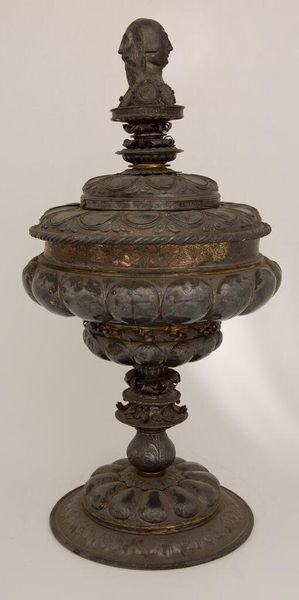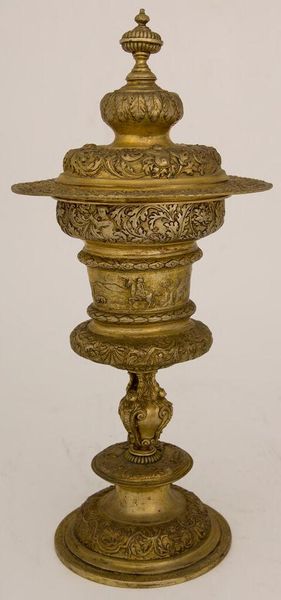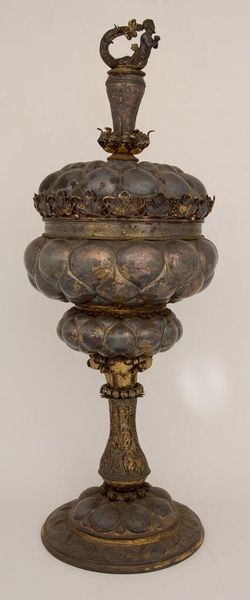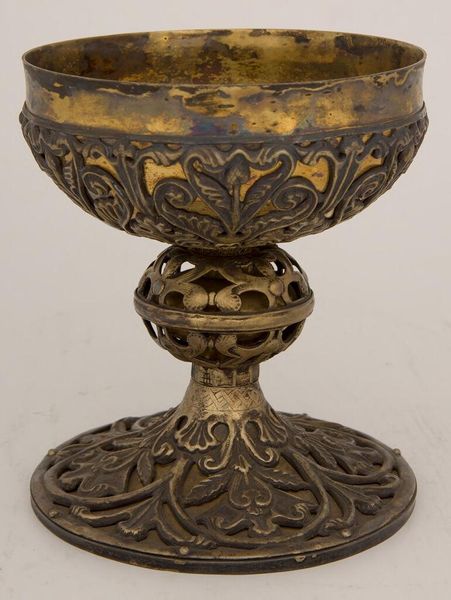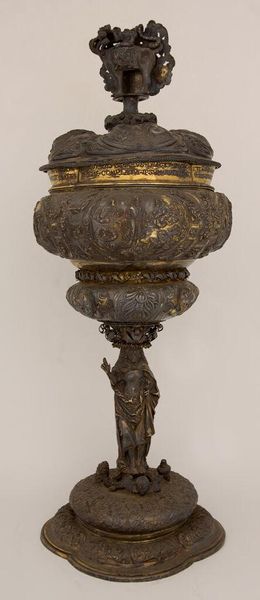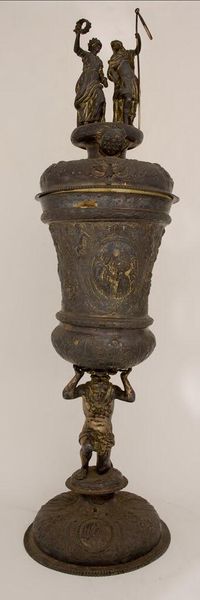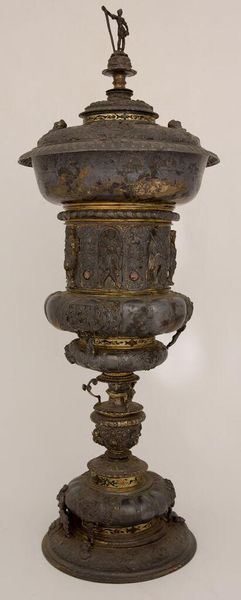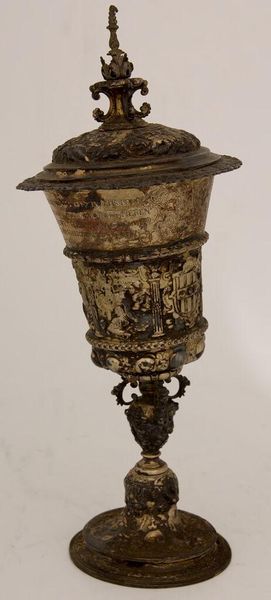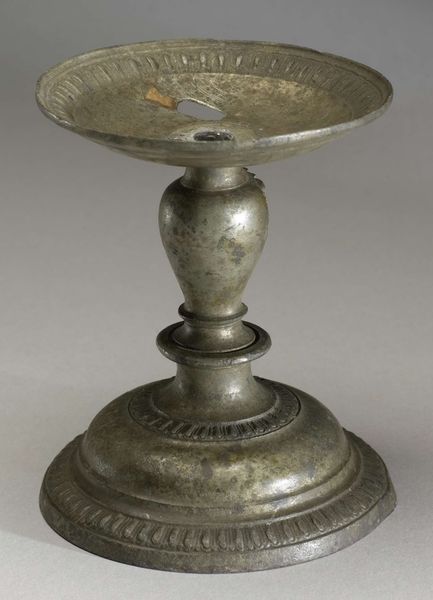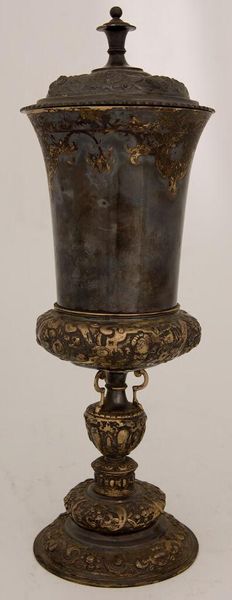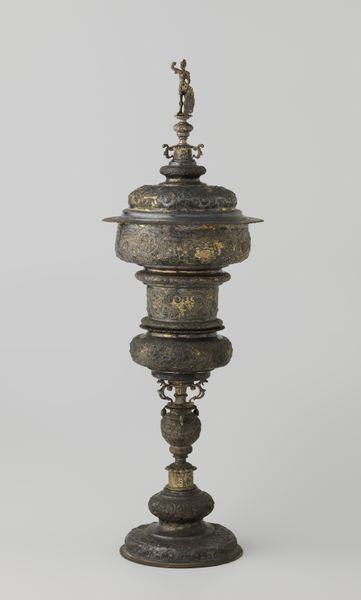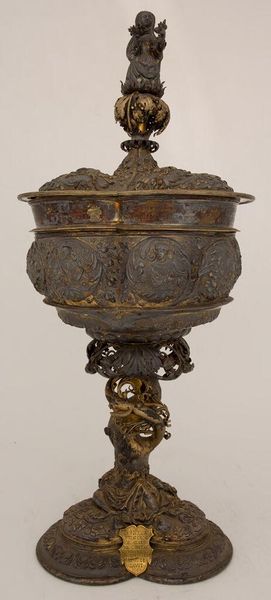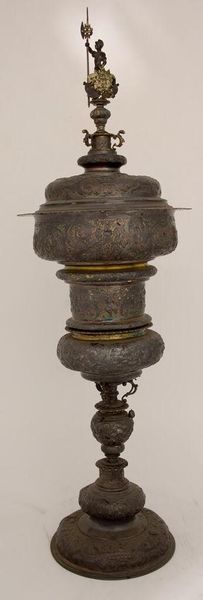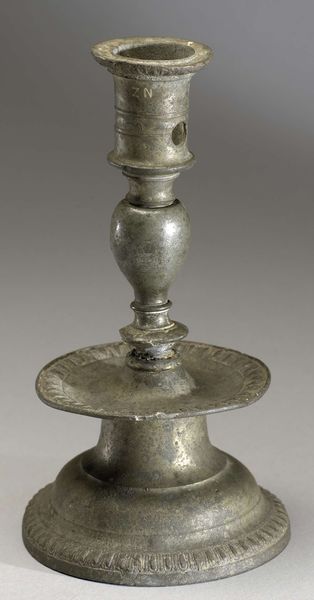
Facsimile of Double Goblet (Lüneburg School, 1585) c. 1900
0:00
0:00
Dimensions: sight: 69.9 cm (27 1/2 in.)
Copyright: CC0 1.0
Editor: Here we have the "Facsimile of Double Goblet", from the Lüneburg School in 1585, made by an unidentified artist. It looks like it's made of metal, maybe brass? I'm struck by how ornate it is. What historical context might have influenced this design? Curator: This goblet reflects the socio-political environment of the late Renaissance, where elaborate displays of wealth and power were crucial for asserting status. These objects were not merely decorative; they performed a social function, embodying prestige and reflecting the owner’s cultural capital. How do you think its design speaks to that purpose? Editor: The detailed carvings and the sheer size of it definitely scream wealth and importance! I hadn’t thought about it that way, that this goblet isn't just pretty, but it has some social significance, too. Curator: Precisely. Appreciating art involves considering the societal forces influencing its creation and reception. This helps us understand its role in shaping cultural values.
Comments
No comments
Be the first to comment and join the conversation on the ultimate creative platform.
